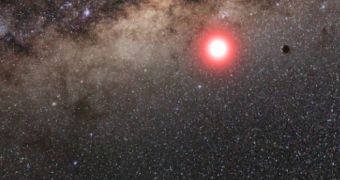This past July 3, a team of researchers led by Andrew Gould with The Ohio State University in the United States announced the discovery of a new planet that is now known to the scientific community as OGLE-2013-BLG-0341LBb.
With a name like that, this planet will from now on be the laughingstock of pretty much all the other celestial bodies in its crew (except for those with equally creative names), and will definitely hate its discoverers for having settled on this moniker.
In a paper published in the journal Science, the space enthusiasts who discovered this planet detail that, according to data at hand, OGLE-2013-BLG-0341LBb is located at a distance of about 3,000 light-years from Earth.
The planet is estimated to weigh about twice as much as Earth, and, unfortunately for those hoping that they could put it on their list of future holiday destinations, it does not appear to be habitable. Thus, this planet is said to be too cold to support life.
As detailed in the journal Science, the distance between OGLE-2013-BLG-0341LBb and the star it orbits is roughly the same as that between our planet and the Sun. The only problem is that, when compared to the Sun, this planet's host star is considerably dimmer.
This means that, despite the fact that it is not located all that far from its host star, OGLE-2013-BLG-0341LBb is by no means what some would call warm and fuzzy. On the contrary, the planet is believed to be even colder than Jupiter's icy moon, Europa.
Interestingly enough, the researchers who identified this previously undocumented planet say that the star orbited by it is part and parcel of a binary system, i.e. two stars that are fairly close to one another and that orbit a common center of mass.
Hence, the discovery of OGLE-2013-BLG-0341LBb is hailed as proof that, given the right conditions, binary systems too can accommodate for habitable planets. According to Andrew Gould and his colleagues, this means that there might be more Earth-like planets out there than believed.
“This greatly expands the potential locations to discover habitable planets in the future,” explains Scott Gaudi, a professor of astronomy at the Ohio State University. “Half the stars in the galaxy are in binary systems. We had no idea if Earth-like planets in Earth-like orbits could even form in these systems,” he adds.
What the researcher means to say is that, even if OGLE-2013-BLG-0341LBb does not appear to be habitable, it is possible that other planets orbiting stars in binary systems are located in just the right place to be able to sustain life.

 14 DAY TRIAL //
14 DAY TRIAL //